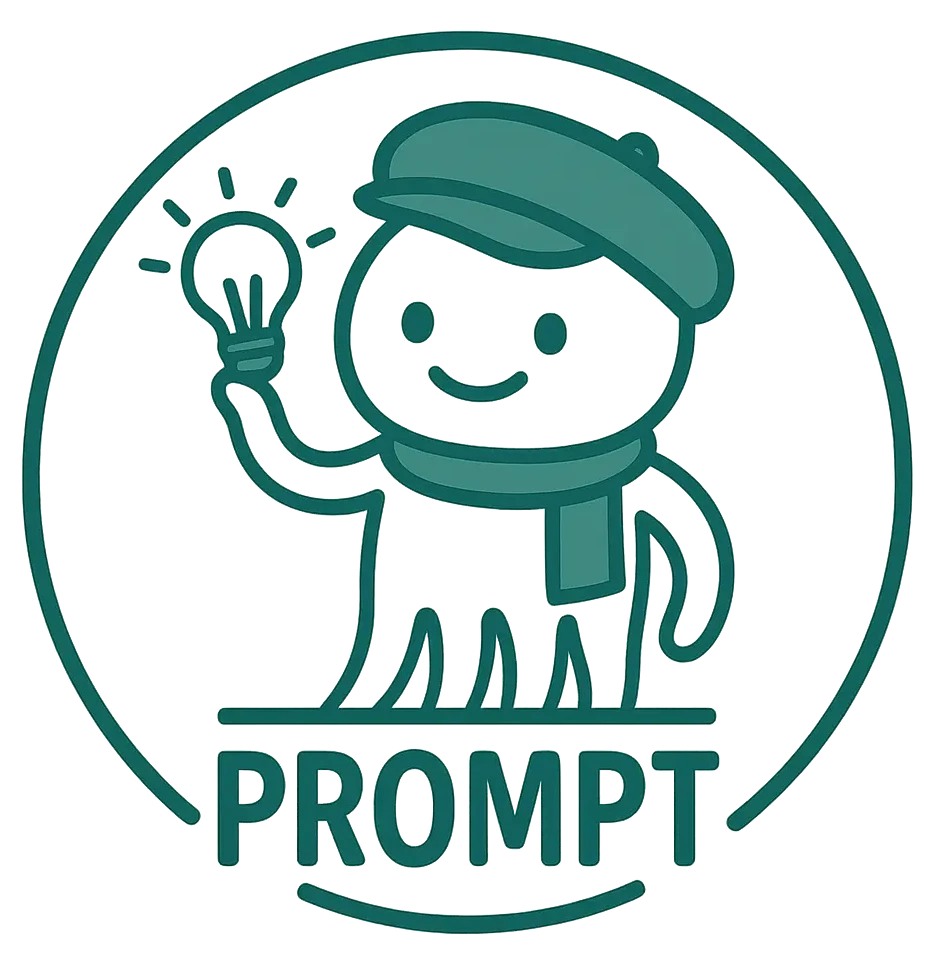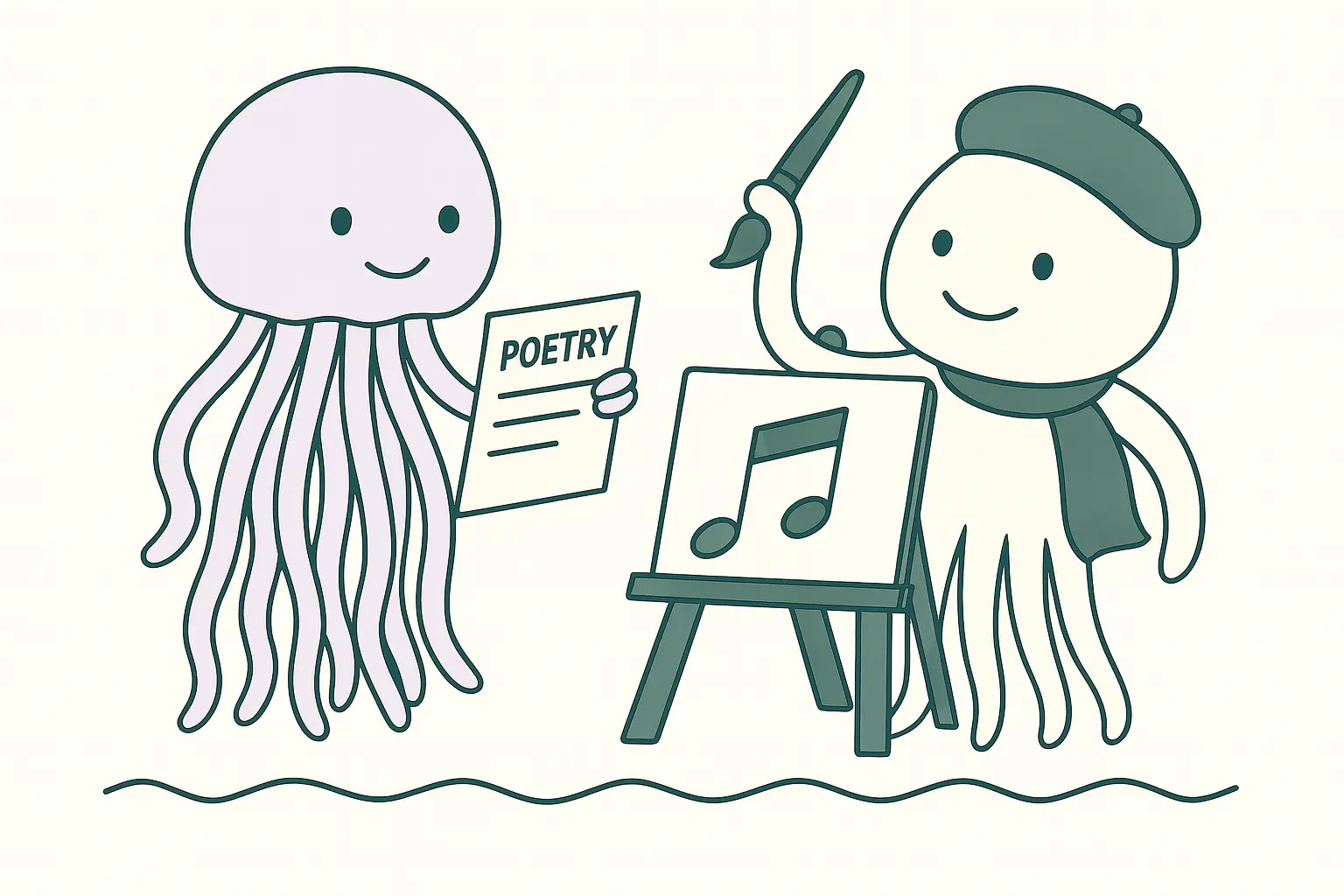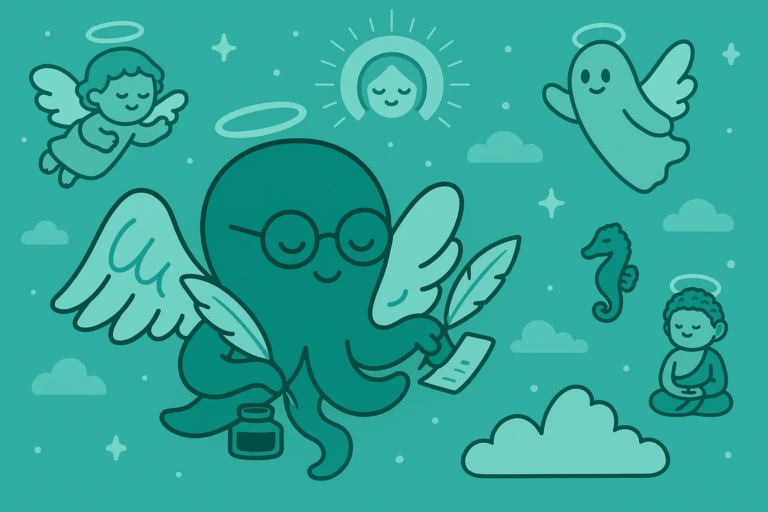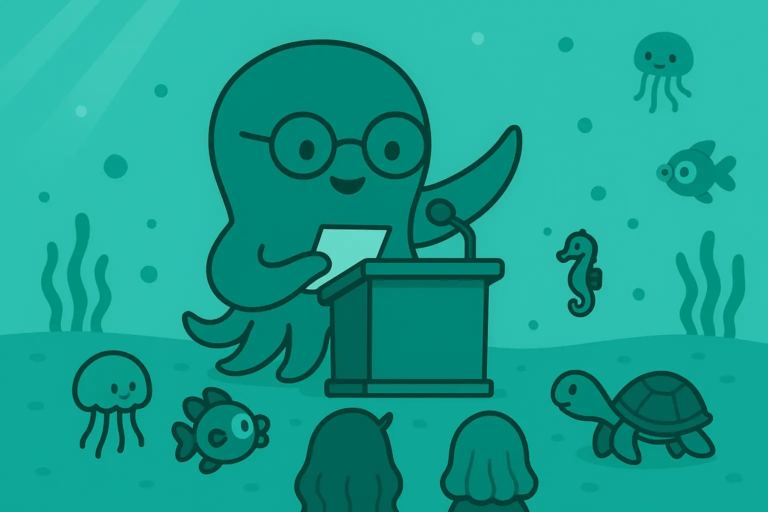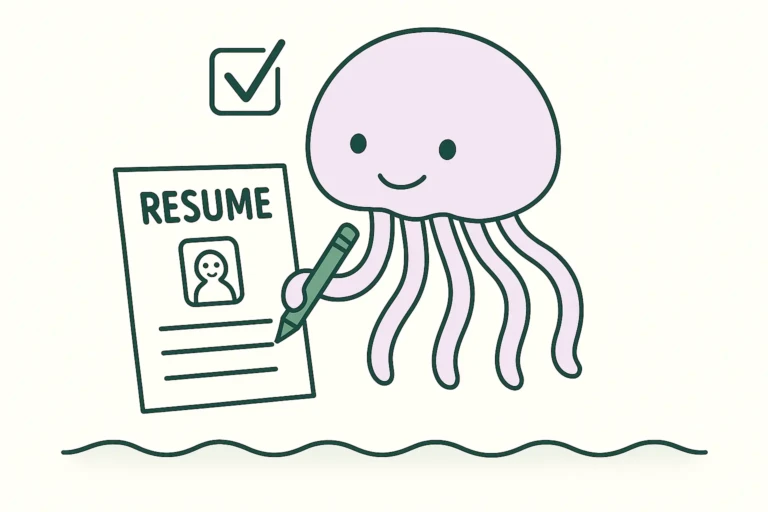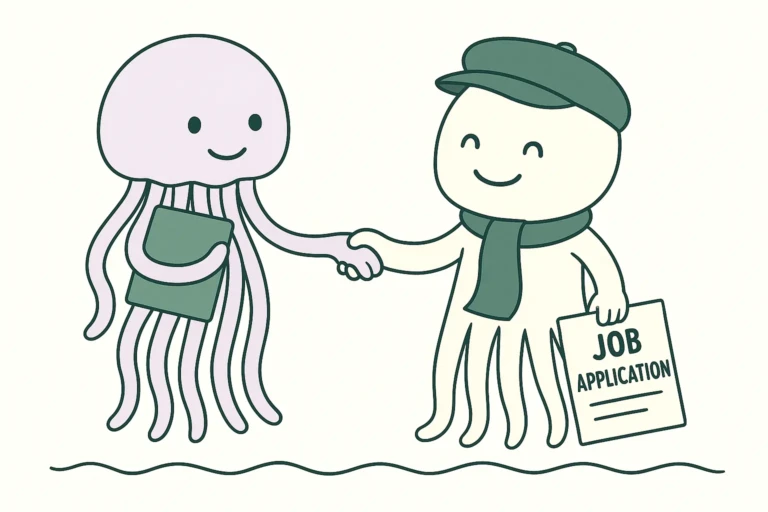10 ChatGPT Prompts for Poets
Sometimes, a poet just needs a spark.
Whether you’re staring at a blank page or stuck rewriting the same line, ChatGPT can help push your creativity forward.
This guide gives you 10 practical and inspiring prompts that help poets generate fresh ideas, play with form, and write more often.
Each prompt comes with clear context, goals, and response guidelines to get exactly the kind of poetic help you need.
Use them to write better, faster, and with more joy.
1. Writing a Poem from a Single Emotion
#CONTEXT: You’re a poet feeling overwhelmed by a strong emotion — joy, grief, anger, or love — and want to channel it creatively into a poem.
#GOAL: Write a poem based on one clear, powerful emotion.
#RESPONSE GUIDELINES:
Ask ChatGPT to help generate metaphors based on [insert emotion]
Use a tone that fits [insert emotion]
Write in free verse or [insert form]
Keep the style vivid, sensory, and emotionally honest
Include 2–3 unique lines that surprise the reader
#OUTPUT: A 10–15 line poem based on one chosen emotion.ChatGPT Output
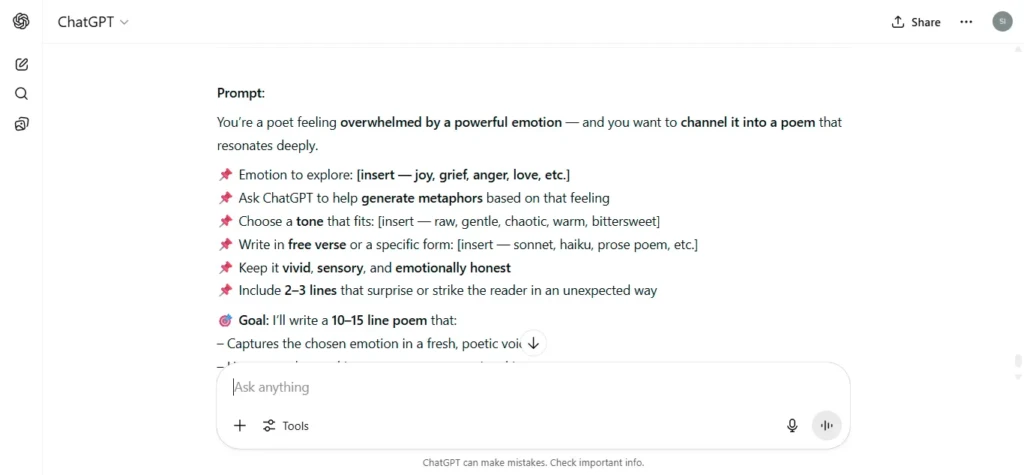
2. Exploring Nature through Poetry
#CONTEXT: You want to write a poem that captures the beauty, chaos, or calmness of the natural world — a tree, ocean, sunset, or storm.
#GOAL: Create a nature-inspired poem filled with vivid imagery.
#RESPONSE GUIDELINES:
Choose a natural setting like [insert landscape or weather event]
Use metaphors tied to [insert audience]'s daily life
Maintain a [insert tone] throughout
Include sounds, textures, and smells to paint the scene
End with a reflective or surprising thought
#OUTPUT: A descriptive, imagery-rich nature poem.3. Turning a Personal Memory into Verse
#CONTEXT: You want to revisit a moment from your past — joyful, painful, or ordinary — and shape it into a personal poem.
#GOAL: Turn a memory into a poetic expression.
#RESPONSE GUIDELINES:
Describe the event in [insert number] sensory details
Write in first person with a [insert tone]
Keep the focus on emotional truth over perfect rhyme
Let the ending carry a shift or insight
Include metaphors to deepen the impact
#OUTPUT: A first-person poem based on a true memory.ChatGPT Output
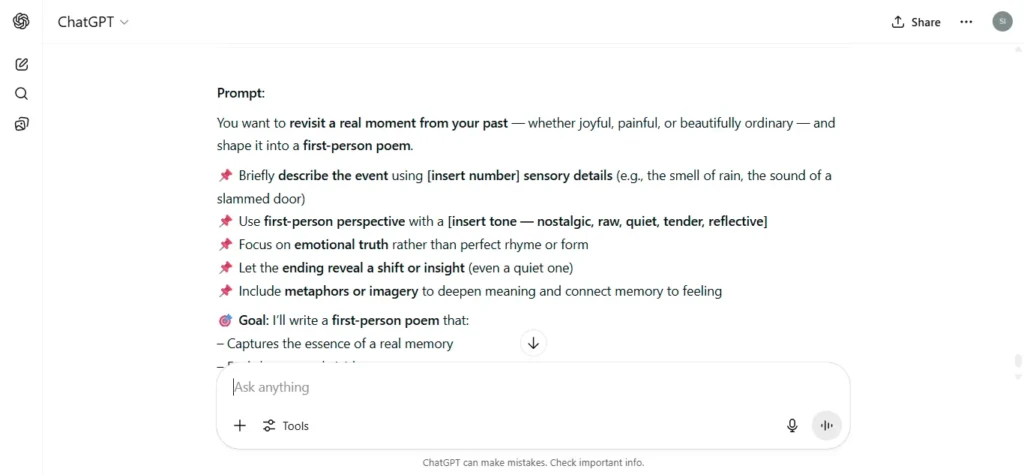
4. Creating a Poem with a Specific Rhyme Scheme
#CONTEXT: You want to write a structured poem that follows a clear rhyme pattern like AABB or ABAB.
#GOAL: Compose a poem using a defined rhyme scheme.
#RESPONSE GUIDELINES:
Use rhyme scheme [insert format]
Stick to a theme like [insert theme]
Maintain a [insert tone] throughout
Use strong rhymes that don’t feel forced
Keep it between 8–12 lines
#OUTPUT: A short poem with a clear rhyme pattern.5. Writing from a Character’s Point of View
#CONTEXT: You want to step into someone else’s shoes — real or fictional — and write a poem from their voice.
#GOAL: Write a character-based poem.
#RESPONSE GUIDELINES:
Choose a character like [insert character or role]
Match the voice and tone to their perspective
Use details from their life to drive imagery
Avoid clichés; focus on internal thoughts
Make it sound authentic and layered
#OUTPUT: A poem written in the voice of a specific character.ChatGPT Output
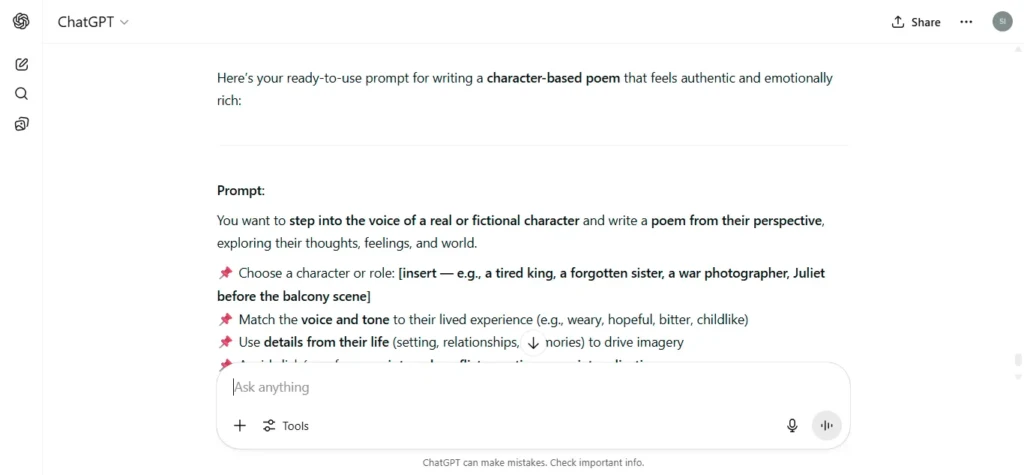
6. Transforming News Headlines into Poetry
#CONTEXT: You want to use current events or news stories as poetic material — to respond, reflect, or react through verse.
#GOAL: Turn a headline or news event into a poem.
#RESPONSE GUIDELINES:
Choose a headline from [insert news source or topic]
Maintain a [insert tone] (serious, satirical, hopeful, etc.)
Use poetic techniques (repetition, metaphor) to elevate it
Add personal or fictional commentary
Keep the format free or structured based on theme
#OUTPUT: A poem inspired by a news headline.7. Using a Random Word Generator to Spark Poetry
#CONTEXT: You feel stuck and want randomness to spark new ideas, so you turn to a random word generator for inspiration.
#GOAL: Create a poem that connects unrelated words in a meaningful way.
#RESPONSE GUIDELINES:
Generate [insert number] random words
Use each word at least once in the poem
Build a theme around one main emotion or idea
Keep the tone [insert tone]
Let the randomness shape the imagery
#OUTPUT: A poem that uses several unexpected words.ChatGPT Output
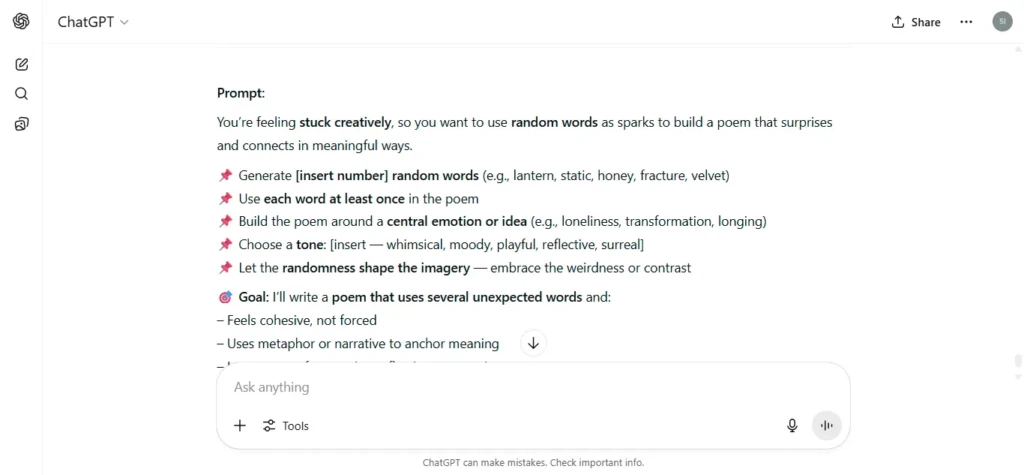
8. Writing a Poem That Tells a Story (Narrative Poem)
#CONTEXT: You want to write a poem that includes a beginning, middle, and end — with characters, tension, and a resolution.
#GOAL: Write a poetic story.
#RESPONSE GUIDELINES:
Use a central character like [insert name or role]
Set the scene clearly in the first few lines
Include a turning point or conflict
End with resolution or ambiguity
Keep the tone [insert tone] and pacing smooth
#OUTPUT: A narrative poem with a clear arc.9. Playing with Poetic Forms (Haiku, Sonnet, etc.)
#CONTEXT: You want to experiment with classic poetic forms like haikus, sonnets, limericks, or tankas.
#GOAL: Write a poem using a traditional form.
#RESPONSE GUIDELINES:
Choose a form like [insert poetic form]
Keep to the structure and rules of the form
Choose a theme like [insert theme]
Keep the tone [insert tone]
Use original imagery within the form’s limits
#OUTPUT: A poem in a traditional poetic structure.ChatGPT Output
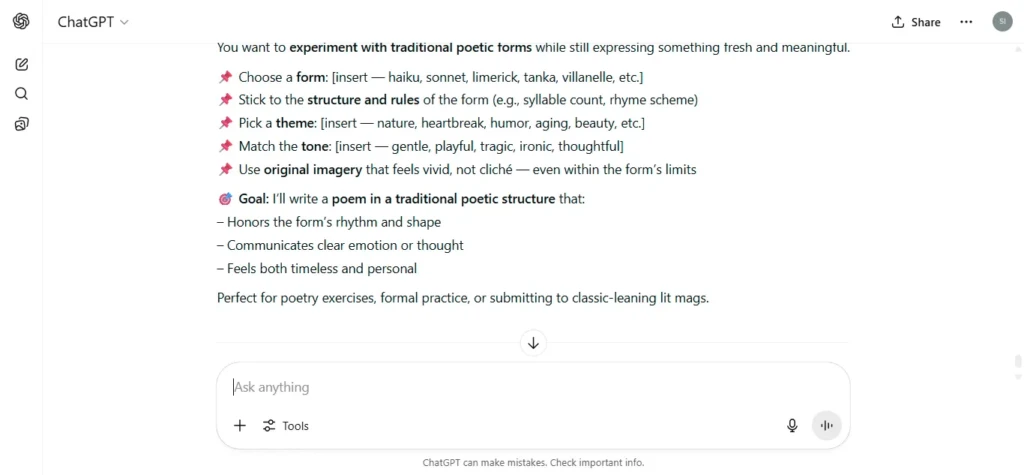
10. Rewriting a Famous Poem with Your Own Twist
#CONTEXT: You love a well-known poem and want to use it as a base to create your own version with a modern or personal spin.
#GOAL: Remix a classic poem into something new.
#RESPONSE GUIDELINES:
Choose a classic like [insert poem title]
Keep the structure but change the theme to [insert theme]
Maintain a [insert tone]
Use updated language or metaphors
Add lines that reflect your own voice
#OUTPUT: A creative reinterpretation of a known poem.How to Use These Prompts Effectively
Personalize the Prompts: Replace the placeholders with your own emotions, themes, characters, or forms.
Edit the AI’s Output: Use the AI as a co-writer, not a final draft tool. Refine lines, change metaphors, and add your own voice.
Make It a Habit: Use one prompt a day to build consistency and poetic fluency.
Mix and Match: Combine two prompts for a unique creative challenge.
Use the Output as a Starter: If you don’t love the result, let it guide you into something even better.
Wrap-Up
Poetry is personal — but that doesn’t mean you have to write alone.
With these 10 prompts, ChatGPT becomes a creative partner that helps you push past blocks and dive into new ideas.
Pick one, try it today, and see where your words take you.
